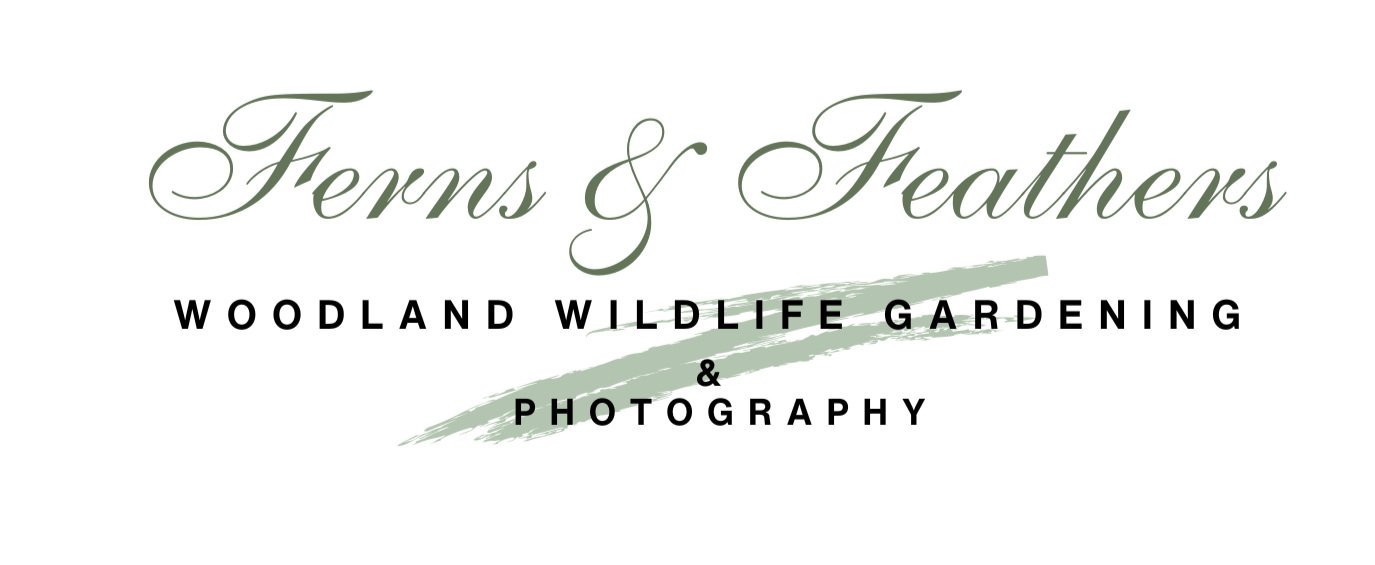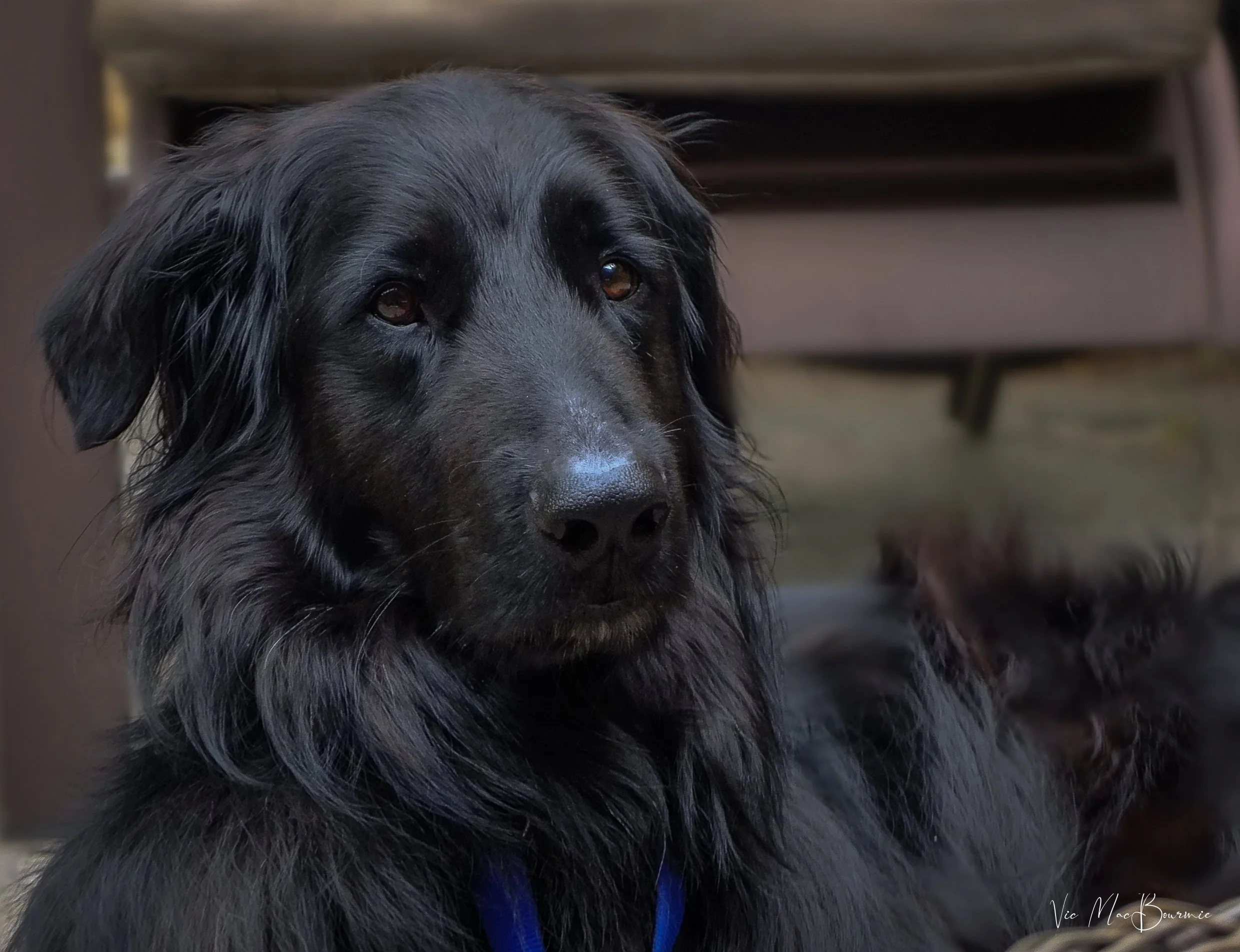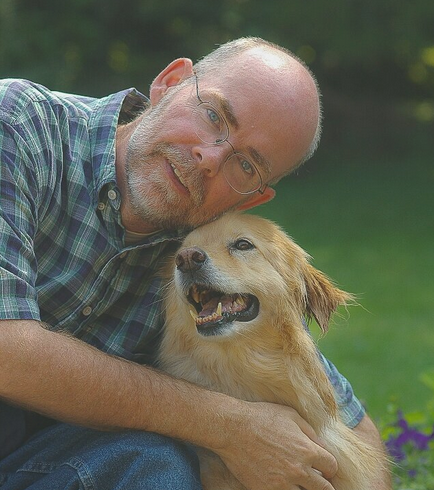Discovering the wonders of the woodland with my new best friend
Flat-Coated Retriever named Colby steals our hearts
The woodland can be a solemn place when you walk it alone. Add a friend and it becomes a whole new world of discovery.
That’s what I experienced when Colby (Cole for short), our 4-year-old flat-coated retriever rescue, literally entered the picture and became my new mate during those woodland walks and garden walkabouts.
And, I quickly discovered there’s not a better buddy to have by my side.
A week of learning and discovery
I’ve learned a lot in just one week with a Flat-Coated Retriever at my side.
If you are wondering, ‘what the heck is a Flat-Coated Retriever,’ think a Golden Retriever in an elegant coat of black with a more delicate frame. Throw in a little Irish Setter, a pinch of water dog, complete with webbed feet, and a heart of gold and you would not be too far off.
They are a breed that have earned the name “Peter Pan” dog for their tendency to never grow old. Young at heart, they are eager to please and quick to be up for an adventure.
Since Colby arrived, everyday has been an adventure – from our walks in the woods to our morning at the waterfalls.
I suspect that even sitting in the backyard watching all the wildlife is an eye-opening experience for him. It’s obvious that he’s not sure what to think of the chipmunks coming in looking for peanuts, but he watches patiently, if not a little too intently.
Then there are the birds always flitting through the trees that surround the patio. The hummers buzzing about don’t seem to catch his attention the way I thought they might. Still, I can’t help but think it’s all new to him. One look at him and it’s not hard to conclude that he’s trying to process it all. If he’s not focused on a single chipmunk making it’s way up my leg for a peanut, his attention shifts from one part of the yard to another, one squirrel at a time.
I can’t wait until we get to introduce him to our wild turkey friends, deer, foxes, racoons and possums. Should be an interesting summer of discovery for the big guy.
I have always loved the flat-coated retriever. I mean what’s not to love except maybe his rather large size. A vet visit yesterday determined his official weight to be 64 pounds. A little on the light side, but an improved RAW diet should add a few pounds to his frame once he gets better settled in to his new home.
It was important for us to adopt a dog that was not bred for killing animals. A rat terrier, for example, would not have gone over well in the backyard and certainly not appreciated by our wildlife friends from chipmunks, squirrels, rabbits, deer, skunks etc. A retriever’s prey drive is much easier to control and we’ve already been impressed with his acceptance of the many chipmunks that appear as soon as we step outside. They are keeping their distance from him but moving ever closer every day.
Cole, our 4-year-old flat-coated retriever rescue sits very patiently waiting for me to get my photographs. Such a “good boy.”
A little background on the flat-coated retriever
Flat-coated retrievers are neither an incredibly well-known breed, nor are they one of those modern breed of dogs that are in vogue these days.
In fact, they go way back to around the mid-1800s where they were bred as a hunting dog. After World War ll the Golden Retriever and labs replaced the Flat-Coated as the dog of choice – possibly the result of our prejudices against, and fears of, all things black including dogs and cats.
Flat-coated retrievers were introduced as a breed in England during the mid-1800s. According to Wikipedia, ”the first examples of the breed were introduced around 1860, but the final type was established 20 years later. They were developed from a mix of St. John's water dogs (a lesser Newfoundland dog, hence the webbed feet), setters, sheepdogs, and spaniels. Initially, they were favoured by gamekeepers and hunters for their ability to retrieve game both on land and in water.
Males stand 23–25 in (58–64 cm) tall at the withers, with a recommended weight of 60–80 lb (27–36 kg). Females are only a wee bit smaller at 22–24 in (56–61 cm), with a weight of 55–75 lb (25–34 kg).
These guys have strong muscular jaws that came in handy for bringing back game, and a relatively long muzzle, (just the way I like my dogs).
If you are looking to fall in love with them, just take one look in their almond-shaped, dark brown eyes that sparkle and show off their intelligent, friendly expression.
The Flat-Coated Retriever comes in three colors – black (most common), liver, and yellow.
Despite their relative scarcity, they continue to be a much loved breed and certainly one of the most handsome dogs around. Their gorgeous black coats, feathers on their legs and tails, and the lovely manes predominantly on male dogs – makes them showstoppers everywhere they go.
Colby is certainly no exception. His friendly nature, at least with human companions, makes him the centre of attention wherever I take him.
I have learned that there is nothing this breed of dog wants more than to just be by your side everywhere you go. Colby is the sweetest boy. I can’t imagine anyone giving him away, but I’ve learned through Goldenrescue.ca, where he was rescued, that Colby has been through a lot in his four short years.
He was originally rescued out of Cairo, Egypt before coming to Canada where he showed signs of extreme fear, anxiety and stress. A dog showing extreme anxiety of everyone and everything is never a good sign, but a professional dog trainer took him in and, as a result of his hard work with Colby, the fear and aggression is pretty much gone, replaced by a calm and loving fellow who instantly felt at home when he arrived here.
Colby at the Falls
One morning Colby and I visited a nearby waterfalls in the morning before other visitors dropped by. He posed for a quick picture for me before romping off. to explore the area.
At home on his favourite chair, in the woods and in the water
It didn’t take him long to discover his favourite chair, which happened to be Holly’s (our previous dog) favourite as well. From there he can keep a careful watch on us even while his rather large head rests on the hassock.
In the woods, Colby turns into a high-energy hound dog sniffing everything in sight and encouraging me to follow every deer trail he comes across rather than the lovely manicured paths that run throughout the conservation lands.
One thing I was not prepared for was his rambunctious greeting the first time we returned after leaving Colby alone for a grand total of one and a half hours. Oh my goodness was he happy to see us. I’m sure a life of being passed around has made him a little leary of being left alone.
I’m trying my best to reassure him he’s found his forever home.
He’s happy to get his feet wet in the stream, but just as happy to walk alongside me and explore what’s around the next corner.
There will be lots of bends and corners in the future for us to explore and I look forward to each and every one of them with Colby at my side.
He’s one heck of a “Good Dog” and I know little Holly would be happy that I have him as a friend.






